1. Washington, US
Suffragists are remembered, and a culture and dining scene blooms

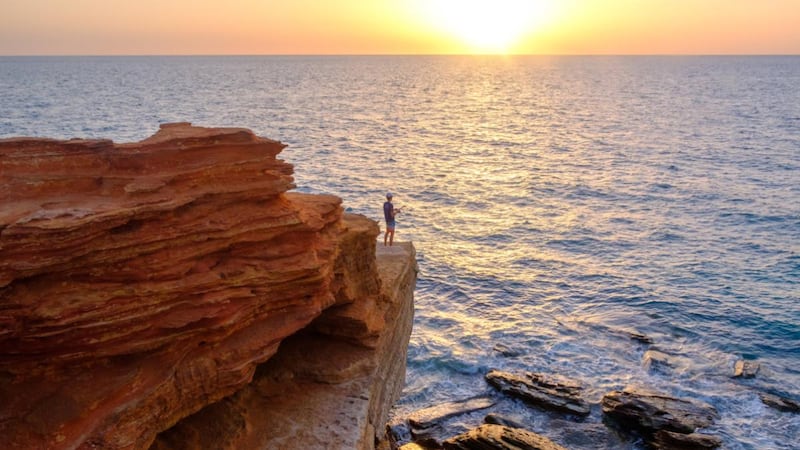
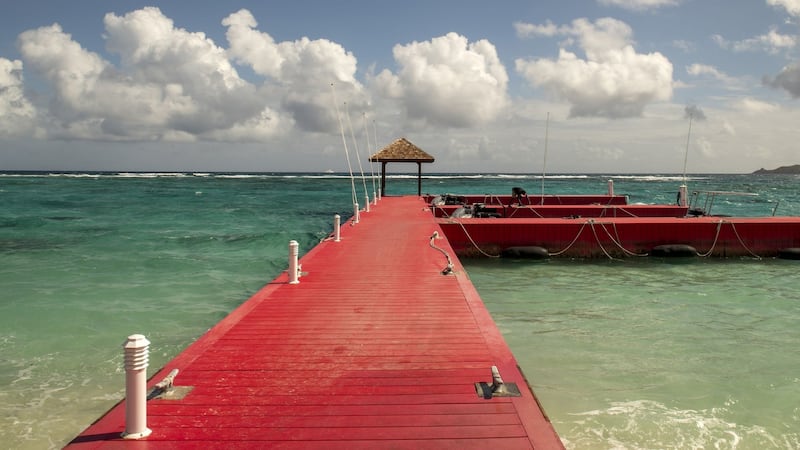
One hundred years ago, on August 18th, 1920, the 19th Amendment was ratified giving American women the right to vote. In Washington, institutions like the Library of Congress, the National Museum of American History and the National Archives Museum have long-running exhibitions either under way or planned to commemorate the milestone. (Admission to all three is free, as it is to most of the city's museums and monuments.) In an election year of perhaps unprecedented political angst, some might find visiting the nation's capital fraught. But in recent years Washington has watched its already-rich culture and dining scene blossom, offering a vast menu of fresh sights and tastes. Away from the halls of government, Washington presents a diverse identity as a majority-minority black city and a cosmopolitan crossroads where American society blends with international influences. The U Street area, sometimes referred to as Black Broadway, is packed with historic theatres and concert halls where jazz flourished and go-go music was pioneered. Beyond a small but growing set of pricier Michelin-starred restaurants, the district has also seen a younger, forward-thinking crop of restaurants emerge, with Ethiopian and Laotian food well represented. Even as a modern, homegrown and ever-changing culture percolates below the surface, though, Washington holds to its historical ideal of a city built on a common heritage – a place for all Americans to reflect on a shared identity, even in a contentious election year. – Zach Montague
2. British Virgin Islands, Caribbean
An island chain devastated by hurricanes rebounds
Hit by Hurricanes Irma and Maria in 2017, the British Virgin Islands have been slow to recover. But this year, a number of resorts will reopen, including Rosewood Little Dix Bay, the iconic resort originally developed by the conservation-minded Laurance Rockefeller in 1964 and was under renovation when the storms hit; it is set to reopen in January. On Norman Island, planned developments for 2020 include three hotels, a marina and an observatory. Offshore, the ship William Thornton, which once housed the floating bar known as Willy T, was damaged and is now part of an artificial reef, but a new vessel has replaced it. Many properties have a new environmental focus. Necker Island, the private island owned by Richard Branson, will finish rebuilding by April, and it will introduce uniforms made from recycled plastic found in the ocean. In 2019, the resort installed wind turbines that have enabled it to run on up to 90 per cent renewable energy. This summer, the Bitter End Yacht Club will open a new marina using recycled materials and a market to provision boat crews; accommodations are scheduled to follow in the fall. Cooper Island Beach Club on Cooper Island, a 15-minute water taxi ride from Tortola, plans to offer packages combining island stays with emissions-free sailing trips aboard a new electric-powered yacht from Voyage Charters. – Elaine Glusac
3. Rurrenabaque, Bolivia
A new protected area invites visitors to see rare wildlife
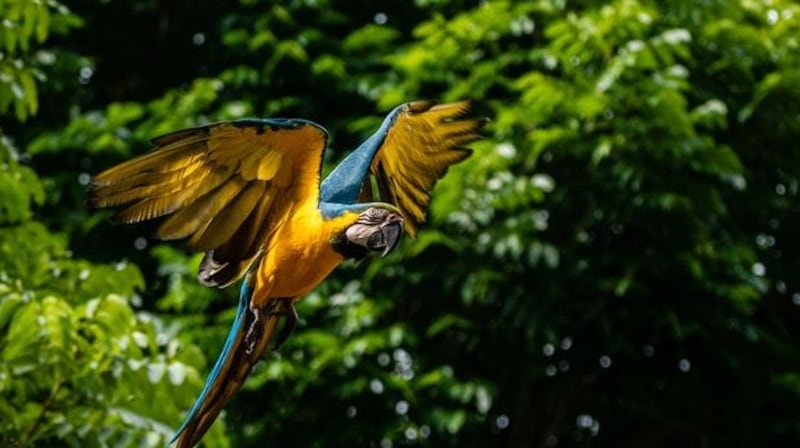
The small town of Rurrenabaque is the gateway to a lush and thrillingly beautiful part of northwestern Bolivia that offers a twofer for tourists passionate about supporting efforts toward sustainability and protecting endangered species. Bolivia just won an award for best green destination from World Travel Awards for its efforts in making this entire region – packed with roaring waterfalls and rare wildlife, and home to many indigenous groups – sustainable while starting programs for ecotourism. Here visitors will find Madidi, one of the world's most biodiverse protected areas, and Rhukanrhuka, an area of tropical rainforest and natural grasslands almost as large as Yellowstone. In June, the Reyes municipal government (in partnership with the Wildlife Conservation Society and the Rainforest Trust) designated Rhukanrhuka a protected area, one that will conserve endangered titi monkeys, pink river dolphins and other rare wildlife. Go now to take advantage of this newly inviting area before other tourists arrive; the Wildlife Conservation Society has a list of operators it recommends. – Nell McShane Wulfhart
4. Greenland
Like Iceland, only more vast, more remote and without the crowds (for now)
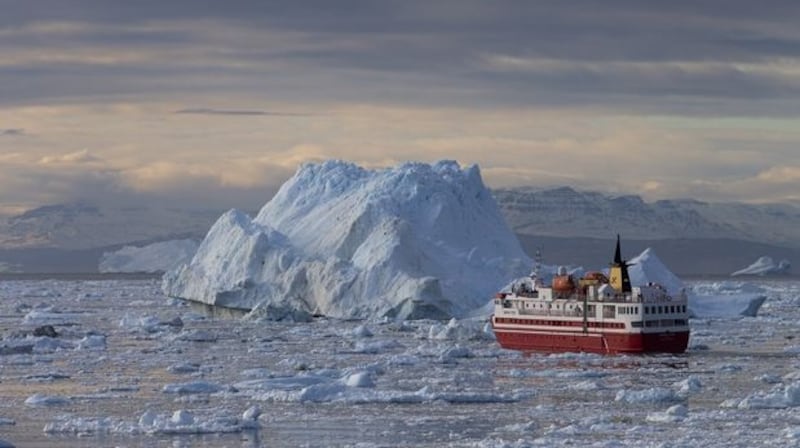
US president Donald Trump's desire to purchase Greenland, a semi-autonomous Danish territory, unleashed jokes and diplomatic strains – and piqued interest in this little-visited island (which counted fewer than 50,000 guests during the first half of 2019). This year, new sustainably focused expedition cruises, some with onboard naturalists and conservationists, are making it easier than ever to explore the least densely populated territory on Earth. Witness the tremendous glacier feeding into the Ilulissat Icefjord, a Unesco World Heritage site, from the MS Fridtjof Nansen. The new hybrid electric-powered ship from Hurtigruten's cruise fleet, based out of Norway, reduces carbon emissions by 20 per cent. Set course for Northeast Greenland National Park, with its glacial lagoons and shaggy-haired musk oxen, on Lindblad Expeditions' new ship, the National Geographic Endurance, which won't have any single-use plastic bottles, cups, straws or stirrers on board. And trek on the Greenland Ice Sheet with famed mountaineer Alex Pancoe off Abercrombie & Kent's new Ultimate Iceland and Greenland Cruise on Le Boréal, which features an onboard wastewater treatment system. With that mile-thick ice sheet melting fast, and two new international airports slated to open in 2023, the time to explore an untrammelled, intact Greenland is now. – Ratha Tep
5. Kimberley Region, Australia
The country’s last frontier teems with grand landscapes and ethereal corals

The least touristy part of Australia is now in bloom with an easier-to-reach bucket list of natural wonders: the Bungle Bungle Range in the Unesco World Heritage-listed Purnululu National Park; the waterways of the mighty Ord River and Lake Argyle (one of the largest freshwater lakes in the southern hemisphere); and El Questro's waterfalls, gorges and epic landscapes. There are new itineraries, too, including Narlijia Experiences' history tours highlighting aboriginal culture, and Kingfisher Tours' outings to the unique and soon-to-close Argyle Diamond Mine. Other options include scenic flights over the Bungles and Lake Argyle, as well as Indian Ocean cruises to three untouched coral atolls in the Rowley Shoals Marine Park. But there's more: The city of Broome's Chinatown area is now revitalised, and the Western Australia Gourmet Escape food festival is extending its reach to the wine and foodie favourites Swan Valley and Margaret River. The area's new accommodations are Call of The Kimberley's outback glamping at Yeeda Cattle Station and the refurbished Kimberley Sands Resort and Spa, which is now for adults only. New air service includes direct flights from Melbourne and Darwin to Kununurra. – Daniel Scheffler
6. Paso Robles, California, US
The Central Coast does its best Tuscany
California's Central Coast has been known as California's other wine country since actor Paul Giamatti went on a road trip and swore off merlot in Sideways 16 years ago. But while Paso Robles in particular is undoubtedly an accomplished wine terroir with more than 300 wineries (L'Aventure and Adelaida wineries recently expanded), to assume it is a string of tasting rooms would be to underestimate it. Last autumn, artist Bruce Munro created Field of Light, a show of 60,000 illuminated glass orbs spread over 6 hectares (15 acres) that has turned the city into an art destination (until June 30th, when the show ends). Meanwhile, the Paso Robles has turned the good life – of wine, olive oil, cheese and boutique hotels – into an identity. The star hotel here, Hotel Cheval, is adding 20 guest rooms, a luxury spa and an infinity pool in 2020, while the new Hotel Piccolo has brought exposed brick walls, a rooftop bar and a hipster crowd to downtown. Two blocks away, chef Julien Asseo (of Guy Savoy in Las Vegas) just opened Les Petites Canailles, a buzzy new farm-to-table restaurant, in November. And Paso Market Walk, a 1,486sq m (16,000 sq ft) marketplace, is expected to open this year – bringing a bakery, microbrewery, gelateria, vegan cheese shop, olive oil tasting room, coffee roasters and artisanal, local specialities to the city. – Danielle Pergament
7. Sicily, Italy
Sustainable rebirth and culinary heritage on a volcanic island
There's some rumbling on Sicily, and it's not just Mount Etna, which began erupting again in 2019. A new wave of green tourism is washing over the Mediterranean island, where non-profit grassroots groups have begun to spearhead sustainable volunteer tourism initiatives like EtnAmbiente, which started an app in 2019 to help locals and tourists photograph and report pollution, increasingly an islandwide problem. These initiatives grew from five concerned individuals in 2018 to a powerful network to help reduce plastics and preserve the unique landscapes and marine habitats. Sicily's Tasca d'Almerita wine family have converted a derelict farmhouse into a winery on the lower slopes of Etna to open in 2020, offering workshops and wine tastings. The family's Anna Tasca Lanza Cooking School is also starting the Food Heritage Association, a non-profit group celebrating Sicilian ingredients. Last year had the opening of Historic Trains of Taste, a series of scenic rail excursions that recently teamed up with Slow Food Sicily to take visitors on trips to lesser-known food and wine spots. Among them is Zash, a hotel and restaurant in the heart of a local citrus grove at Etna's base that received its first Michelin star in the 2020 guidebook. Uncovr Travel, a small-group tour operator (up to eight guests) specialising in Sicily, launches electric car tours to local food producers and artists this year. Palermo will get more lodging accommodations, including Rocco Forte's Villa Igiea, which has committed to plastic-free amenities like straw flip-flops and boxed water, while the NH Hotel Group, a chain devoted to the United Nations' Sustainable Development Goals, will give its Palermo property a significant refurbishment. – Adam Harney Graham
8. Salzburg, Austria
A renowned music festival celebrates its centennial
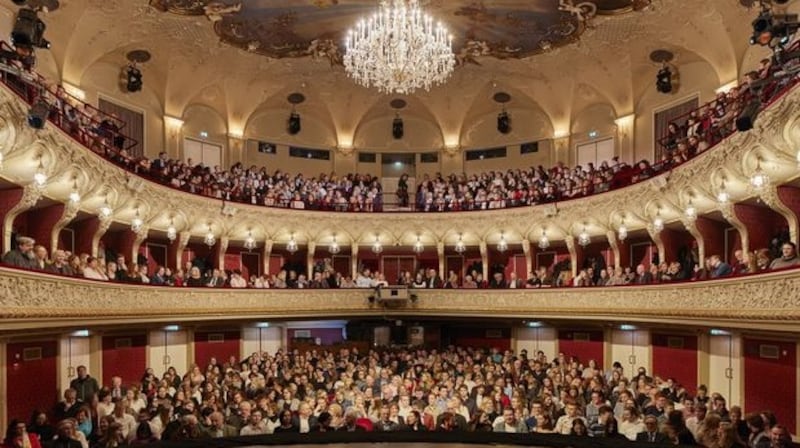
The hills are still alive with you-know-what. Salzburg, Austria, draws hordes each year to the bright yellow town house where Mozart was born and to the Mirabell Gardens, where Julie Andrews taught a troupe of ersatz von Trapp children their do-re-mi's in The Sound of Music. But it's worth the pilgrimage this year for another reason: The Salzburg Festival, the Davos or Disneyland of classical music, will celebrate its centennial this summer. There will be diva turns by Anna Netrebko and Cecilia Bartoli and performances by some of the finest maestros and soloists in the world; the house band, as ever, will be the incomparable Vienna Philharmonic. The charming Salzburg Marionette Theater offers smaller scale (and prices). And the tone-deaf can enjoy the Baroque splendour of the Old Town; the sublime Wiener schnitzel at Herzl; and the addictive local street food, bosna sausages. A nearby alpine peak, Untersberg, is reachable by city bus and cable car. A different kind of summit can be enjoyed in its grand cafes: the Salzburger nockerl, a sweet soufflé whose sugar-dusted peaks suggest nearby snow-capped hills. – Michael Cooper
9. Tokyo, Japan
The Olympic Games are just the beginning
All eyes will be on Tokyo as the city hosts the 2020 Summer Olympics from July 24th to August 9th. In addition to the games – with all the new hotels, sporting venues, transport upgrades and general excitement they confer – the Japanese capital is a top pick for travellers hungry for a taste of its unmatched food scene, rich cultural heritage, cutting-edge architecture and see-it-here-first fashion. In this ultramodern metropolis, endless adventures await: Watch the tuna auction at the new Toyosu fish market; wait in line for Japanese soufflé pancakes at Flipper's; try the chocolaty coffee at the cult roastery Bear Pond Espresso; and browse one-of-a-kind clothing at the eclectic Kitakore complex. You can satisfy your pop-culture predilections at Nakano Broadway, walk through a bygone era in the traditional Yanaka district, and admire the futuristic facade (and excellent reading selection) at a bookstore called Daikanyama T-Site. And don't miss slurping Michelin-starred ramen at Tsuta. To get the big picture, check out the view from 451m (1,480ft) at the Skytree. Then drink craft beer in a treehouse at Nakano Beer Kobo, unwind at the discreet record bar Track, or simply forge your own path. The options are endless. – Ingrid Williams
10. Caesarea, Israel
'Pompeii by the beach' is an impressive archaeological complex
Herod the Great named this ancient port city Caesarea in honour of Caesar Augustus more than 2,000 years ago. Today it preserves many of the world's most impressive Roman ruins, including an amphitheatre, an aqueduct that runs parallel to the Mediterranean Sea and a hippodrome with an Egyptian obelisk. A flurry of recent restoration work – spearheaded mainly by Ariane de Rothschild – has now made the city a leading historical tourism destination on par with the Acropolis in Athens. Visitors to Caesarea National Park can walk atop a fortress built in the 13th century and view the newly restored ruins of one of the world's oldest synagogues. A visitor centre unveiled last June, in four 8m (26ft)-tall vaults dating to the first century BC, includes a theatre and a room filled with antiquities, like a cache of gold coins divers found in Caesarea's underwater archaeological park. This summer archaeologists plan to unveil eight more vaults, a vast platform containing the ruins of a temple devoted to Emperor Augustus and a monumental staircase. After exploring, travellers can stay at the nearby Dan Caesarea, a mid-century hotel that recently reopened with contemporary art installations and a poolside Greek taverna. – Casey Hatfield-Chiotti
11. National parks, China
The country ramps up conservation efforts with a new park system
Despite China's major problems with pollution and as a driver of the illegal wildlife trade, the country appears to be attempting to safeguard its ecosystems, in part by establishing a new unified system of national parks. In 2020, the 47,500-square-mile Sanjiangyuan National Park will open in the Tibetan Plateau, a region known for its high density of elusive snow leopards. To protect the animals, over 17,000 local herdsmen have been enlisted as salaried rangers. In Sichuan, Shaanxi and Gansu, the Giant Panda National Park will connect 67 panda reserves across 27,195sq km (10,500 sq miles). While it is difficult to observe the bears in the wild, travellers can spot other endemic species like antelope, muntjac and Tibetan macaque, as well as volunteer as panda keepers at the Dujiangyan Panda Base. In Sichuan province, the Unesco-listed Jiuzhaigou National Park suffered a devastating earthquake in 2017, but the park is expected to fully reopen this year and showcase the scenic valley's Tibetan villages and waterfalls. – Nora Walsh
12. Lesotho
A quiet mountainous country is a wonderland for adventure
The tiny country of Lesotho – a picturesque enclave of jagged desert mountains fully surrounded by South Africa – has been lost to most African itineraries. But things are changing in landlocked Lesotho, known as the "mountain kingdom," where most residents, dressed in colourful traditional wool blankets, live in remote rural villages. Over the past decade the number of visitors has nearly doubled as the country has begun promoting tourism to grow its economy. A newly started e-visa platform is making visiting easier. Visitors can explore ancient rock paintings at Unesco-listed Maloti-Drakensberg Park, or take multiday pony treks to stay in remote thatch-hut villages. (Outfitters such as solar-powered Malealea Lodge arrange trips.) And in 2020, the capital, Maseru, is scheduled to open a new National Museum and Art Gallery in a three-story building shaped like a spiral aloe, an endemic plant. It will feature exhibits on Basotho culture, its handicrafts tradition and the nation's first digitised archives. – Kim I Mott
13. Colorado Springs, US
The new Olympics museum is only one draw
A gateway to alpine vacationlands since trains first arrived in 1871, Colorado Springs springs anew in 2020. In April, the $90 million (€81 million) US Olympic and Paralympic Museum opens, with a design by Diller Scofidio + Renfro, the architects behind the reinvention of the Museum of Modern Art in New York. Another opening, this one in autumn, will be up on 4,302m (14,115ft) Pikes Peak, where the new zero-energy Pikes Peak Summit Complex, sheathed in weathering steel and sandstone quarried in New Mexico, will give travellers a ptarmigan's-eye view of the panorama from 9m (30 ft)-high windows. Hungry? The city's emergent locavore food scene is another draw: Bakers at Nightingale Bread mill their own organic heirloom grain (much of it from Colorado's San Luis Valley) at Lincoln Center, a new market hall tucked into a 1948 former elementary school. At Four by Brother Luck – whose namesake chef has appeared on Chopped and Top Chef – dishes are inspired by the indigenous foods of the Four Corners region, including Ute tribe blue cornbread with wojapi (berry sauce). You'll find trout from Front Range streams on the menus at the recently renovated Broadmoor, a pink stucco Italian Renaissance-style resort that looms over the landscape like a fever dream of Gold Rush-era miners. – Kathryn O'Shea-Evans
14. Cracow, Poland
A city with a rich past focuses on new parks and curbing pollution
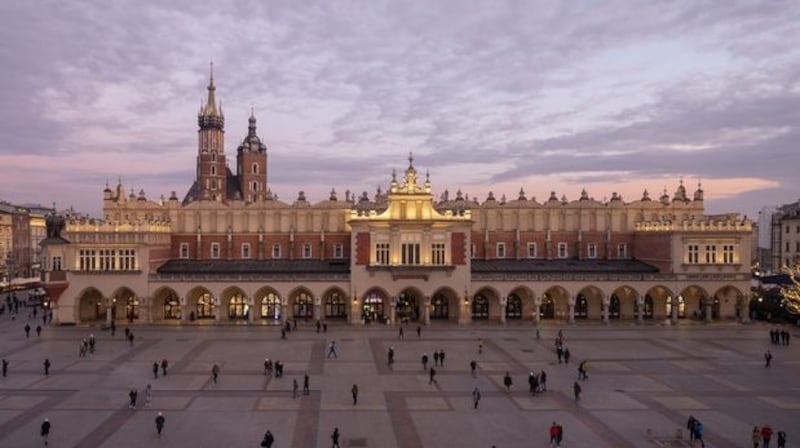
Largely spared from the destruction of the second World War, Poland's second largest city has an intact medieval town centre that is one of the largest in Europe. It is known for its cathedrals, Jewish history, cafe culture and rich university life, as well as oddities such as the Wieliczka salt mine, a 13th-century underground labyrinth of rooms, passageways, chapels and statues, all carved from salt. Unfortunately, Cracow has suffered from some of Europe's worst air pollution. The Nowa Huta (New Steel Mill) district in Cracow, built in 1949 as a model Socialist settlement, once produced seven million tonnes of steel a year. For years, acid rain from the burning of fossil fuels and wood damaged the city's medieval stonework. Recently, Cracow has begun to make changes to improve air quality for residents and tourists alike. In 2019, it became the first city in Poland to carry out a ban on burning coal and wood. By the end of 2020, it will have deployed a fleet of electric buses throughout the most heavily polluted parts of the city. It is also opening a series of parks along tributaries of the Vistula River, like Reduta Park, Cracow's first resident-designed communal space. Other greening initiatives, like an urban forest, are planned. – Peter Kujawinski
15. Jodhpur, India
Song, dance and royal grandeur in Rajasthan’s ‘Blue City’
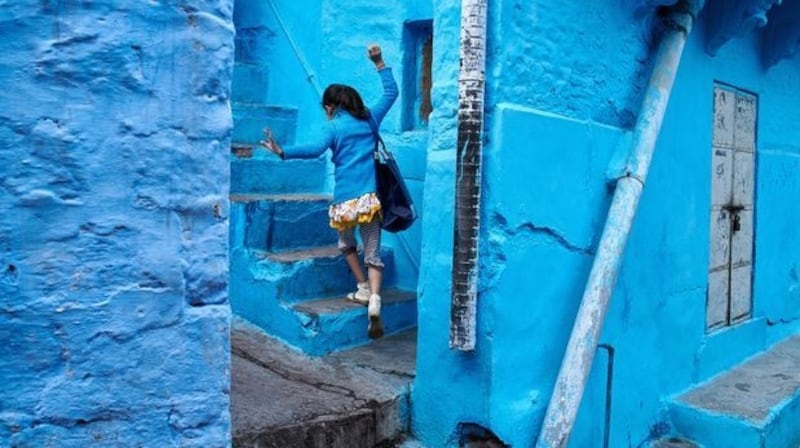
Jodhpur, in the northwestern state of Rajasthan, remains a rustic, rough-hewed hub of art and culture at a time when many of India's cities have been transformed by the tech industry. In February, the World Sacred Spirit Festival will descend on Jodhpur's Mehrangarh Fort, a 15th-century fortification, museum and Unesco World Heritage Site, bringing with it more than 200 musicians from around the world. If you can't make it by then, don't fret. Every fall, the Mehrangarh Fort plays host to a folk music festival where patrons have included Mick Jagger. An immersion into an India that existed before skyscrapers and call centres continues among the city's many cobalt-blue houses (painted to reflect the rays of the sun, to signify the dweller's superior status, to repel insects or for aesthetic appeal, depending on whom you ask) and at Umaid Bhawan Palace, an art deco compound that still houses the former royal family but also functions as a luxury hotel. The palace's nightly performances of song and dance pay tribute to the Marwari people of this desert-dappled region. In July, the budget airline IndiGo announced daily non-stop flights to Jodhpur from Delhi and Ahmadabad, making the city more accessible than ever. – Sheila Marikar
16. Western Sweden
Hike a new trail, eat a new meal, then work it off, all (or mostly) carbon free
It's hard to talk about sustainability without talking about Scandinavia. Few destinations offer as many new opportunities to witness how the region's green goals are playing out as Sweden, which seeks to free itself of fossil fuels by 2050. Western Sweden feels like ground zero. A 71km (44 mile) trail recently opened between Gothenburg and the small town of Alingsas, focusing on sustainability. Train stations along the way allow you to hike it in sections, without a car. You can stop by the "zero waste" restaurant Garveriet, and have coffee and cake, or "fika," as part of a "meet the locals" initiative. Up the coast, Ramsvik Stugby and Camping now has the Swedish travel industry's largest solar-power generating facility, making it an emissions-free camping and cabin area. Spend your days running or hiking around the Ramsvikslandet Nature Reserve or at an "edible country table": an outdoor dining experience in which groups forage for ingredients like wild garlic and raspberries and cook them together following a chef's recipe (without the chef). – Tim Neville
17. Egypt
Fancy new digs for King Tut and company
The Egyptians are building like the pharaohs to finish the massive and much-anticipated Grand Egyptian Museum in time for its scheduled gala opening this year. The project, which is reported to cost $1 billion (€89 million), has involved thousands of workers and nearly two decades of labour. The soaring space will be situated just over 1.5km (1 mile) from the Pyramids of Giza and contain around 100,000 objects, including more than 5,000 related to King Tutankhamen. It will join other recently inaugurated archaeological troves, including the National Museum of Egyptian Civilization and an ancient tomb of colourful frescoes in the Saqqara Necropolis. And visiting Cairo will be easier than ever, courtesy of the new Sphinx International Airport and hotels like the 366-room St Regis Cairo, set to open in June. – Seth Sherwood
18. La Paz, Mexico
In Baja, a reimagined waterfront and a sustainable sensibility
Just up the coast from Cabo San Lucas is La Paz, the capital of the state of Baja California Sur state and one of the region's oldest, most dynamic cities with a population of 250,000. But unlike many of Mexico's better-known beach towns, the La Paz area has resisted large-scale resort-style development and remained comparatively unknown to outsiders. Decades ago, local environmentalists pushed for the creation of what eventually became the expansive Unesco Marine World Heritage protected area, a designation that aimed to preserve the coast and offshore areas, home to such rich biodiversity that the Sea of Cortez is known as the "aquarium of the world". Last year, La Paz passed one of the strictest single-use plastic bans in Mexico, which will begin going into effect this year. At the same time, the city has undergone an extensive, multiyear renovation of its waterfront malecón, or boardwalk, which extended its length by 5km (3 miles), created bike lanes and added a skate park, fountains and sculptures by prominent Mexican artists illustrating local marine life. Later this year, Grupo Habita, Mexico's stylish boutique hotel operator, is opening its first southern Baja property, the 32-room La Casa de las Perlas, or House of Pearls, in La Paz. The hotel, which incorporates a building from the 1910s, will have a pool, spa, restaurant and "sunset bar" overlooking the malecón and sea. – Freda Moon
19. Grand Isle, Louisiana, US
Hauntingly beautiful, a barrier island may soon vanish
Louisiana's last inhabited barrier island, Grand Isle raises an unsettling question: Does a place appear more hauntingly beautiful when you know it's disappearing? A longtime sport and commercial fishing hub two hours south of New Orleans, this pancake-flat wisp of land 11km (7 miles) long and on average a km wide faces one of the world's highest rates of relative sea level rise, and uncertain survival. Now is the time to go, while the Gulf of Mexico still washes the sands of Grand Isle State Park under blue skies dotted with cotton-puff clouds, and roseate spoonbills still take flight in a flash of pink plumage in hushed bayous and marshes best experienced by kayak. Wind-twisted trees populate the unique live oak forests known as cheniers, and in the spring – especially around April's migratory bird festival – masses of songbirds from Central and South America as well as Mexico can drop almost literally from the sky, exhausted after their epic gulf crossing. Bottlenose dolphins often frolic alongside the boat tours offered by Calmwater Charters, which highlight the isle's human and natural history and include a cruise-by of a vital pelican rookery, Queen Bess Island, where major habitat restoration wraps up in February 2020. – Christopher Hall
20. Chow Kit, Kuala Lumpur, Malaysia
An underappreciated neighbourhood gets a dose of fresh style and energy
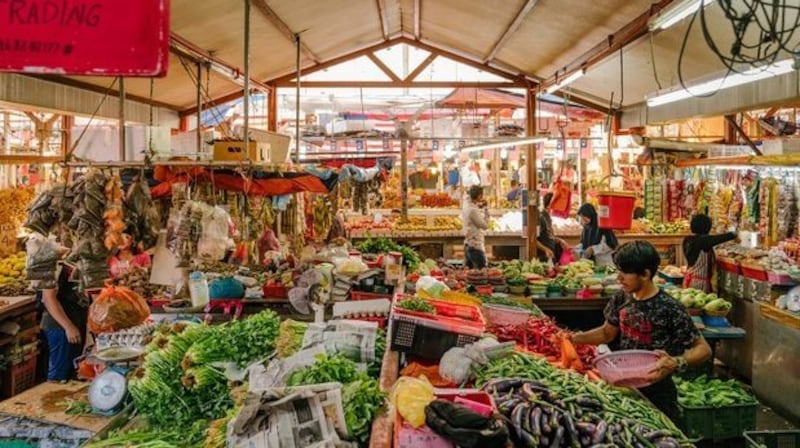
As Malaysia's financial and political hub, Kuala Lumpur attracts international travellers on many fronts. There are the Islamic-inspired, César Pelli-designed Petronas Twin Towers; the hypnotically bloody Hindu festival Thaipusam (where devotees pierce their flesh to honour the deity Murugan); and the just-opened, multiuse Exchange 106, the tallest building in southeast Asia. This year, however, visitors might focus on the neighbourhood of Chow Kit, as the recent opening of two hotels delivers a fresh dose of style and energy to the gritty, underappreciated red-light district. The 113-room Chow Kit hotel, designed by Brooklyn-based Studio Tack in its first project in Asia, welcomes guests with hand-textured walls, deep-tufted banquettes and layered rugs. Its handsome Chow Kit Kitchen and Bar, with reeded-glass windows, pulls in the local and international crowd with a modern Malaysian menu. Next door, its wallet-friendly sister property MoMo's has a pared-back look: unfussy microrooms have concrete and combed-plaster walls and plenty of wood, while a social space called the Playground replaces the traditional lobby. Beyond, the district is home to the country's largest fresh-produce market, southeast Asia's biggest Sikh temple and eclectic new restaurants like the Caribbean-influenced Joloko. Along Jalan Doraisamy, a one-way street that runs off the district's main artery and was once a popular nightclub strip, reimagined shophouses have become The Row, an enclave of hip stores, art spaces and places to eat and drink. – Sanjay Surana
21. Jevnaker, Norway
Twisted architecture is the draw at a village with a major sculpture park
About 80km (50 miles) north of Oslo, Norway, Jevnaker is a sleepy village on the southern shore of the Rands Fjord that is also home to one of the largest sculpture parks in northern Europe. Founded by a wealthy Norwegian art collector, Kistefos Museum and Sculpture Park occupies a former wood pulp mill complex that today showcases 46 sculptures from contemporary artists such as Anish Kapoor, Olafur Eliasson and Yayoi Kusama, among many others. What makes it a must-see cultural destination is the Twist, a new 1,394sq m (15,000sq ft) structure spanning a river in the middle of the sculpture park. Opened in September, the show-stopping bridge was designed by the Bjarke Ingels Group with a streamlined aluminium facade that twists like a stack of cards. Both a bridge and a sculpture in its own right, this topsy-turvy structure will also serve as a gallery space for temporary exhibitions. – Ingrid Williams
22. The Bahamas
Much was untouched by a major hurricane and awaits visitor
The hundreds of islands that make up the Bahamas are so pristine that astronaut Scott Kelly deemed them Earth's most easily recognisable place from space – and one of its most beautiful. About 6.6 million people visited the Bahamas in 2018, but in the wake of Hurricane Dorian in September, that number took a nosedive. Four months later, only Great Abaco remains too damaged to visit; many islands, including the 193km (120 mile) long Exumas chain – home of the famous swimming pigs – were not hit by the storm. And the Bahamas, where close to half the economy depends on tourism, needs visitors' dollars to shore up critical rebuilding efforts. Grand Bahama Island has already bounced back, with cruise ships once again docking in Freeport and several hotels reopening. In 2020, non-stop flights to Nassau from Denver will begin, opening up the Bahamas to the western United States. In June, one of Jimmy Buffett's Margaritaville resorts is scheduled to open in Nassau's downtown, offering a much-needed injection of energy to the city centre night life. On New Providence Island, Baha Mar, a 2,300-room luxury resort on Cable Beach, has a new children's centre opening in January that will make the destination, which has the largest casino in the region, more family-friendly. – Frances Robles
22. Kampot, Cambodia
A tranquil riverside escape adds a dedicated food street
Kampot, a laid-back riverside enclave of French colonial buildings, pepper plantations and a giant sculpture of southeast Asia's famously pungent fruit, the durian, has long been southern Cambodia's under-the-radar destination. Getting there in 2020 will be considerably easier: a road-widening project (on the route from the capital, Phnom Penh) is nearing completion, and a new port is opening this spring, with ferries to Phu Quoc in Vietnam and to other islands in the Gulf of Thailand. When you arrive, Kampot's charms will be amplified, too. The low-slung town centre, accented with arches, shutters and colonnades, is adding trendy eateries like the Hotel Old Cinema, a recent remake of an art deco theatre. And on the promenade along the Praek Tuek Chhu River – picture-perfect for sunsets and the launching point for neon party boats and firefly tours – a new food street is opening, with dozens of local cooks setting up stalls each night. Fairs with handicrafts, live music and carts piled with trays of fried bugs are popping up almost monthly. For the best perspective, head up nearby Bokor Mountain, a former colonial hill station with waterfalls, an elaborate Buddhist temple and an abandoned stone church overlooking forests and the sea. – Patrick Scott
24. Christchurch, New Zealand
An earthquake and a terrorist attack turn a city into a global symbol of resilience
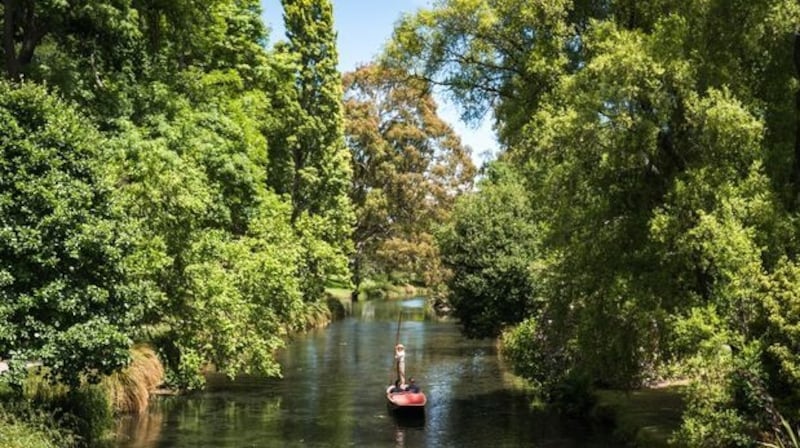
Ten years after the 2010 Canterbury earthquake and not quite a year after the March 2019 terrorist attack on two mosques, Christchurch, where 23 million New Zealand dollars (about €13.4 million) has been raised to support the Muslim community, continues to prove itself as a global symbol of resilience. While earthquake destruction remains visible, downtown has been animated by recent building and restoration, including the Turanga, or Central Library, designed in modernist style by Danish firm Schmidt Hammer Lassen. Expected to open this year, the nearby Puari Village, a Maori cultural centre, will offer exhibitions, Maori food and waka (canoe) tours on the Avon River. The new Riverside Market offers produce and prepared food from the surrounding Canterbury region, the breadbasket of New Zealand, in 40 stalls adjacent to a lane of new boutiques. Besides a strong public art program, which has installed sculptures across the city, recent highlights include the food hall Little High Eatery; its neighbouring wine bar Not Without You; and Eco Villa, an eight-room inn reconstructed from a 1910 vintage, earthquake-damaged house across the street from architect Shigeru Ban's Cardboard Cathedral. – Elaine Glusac
24. Asturias, Spain
An under-the-radar retreat for Spaniards to get away from it all
With emerald hillsides dropping down to sapphire seas lapping crescent-shaped beaches, Asturias has long been the summer refuge of Spaniards who shun the masses crowding Mediterranean shores. Today the region that launched the Reconquista of Spain starting in the eighth century is known for abundant hospitality but doesn't get much attention from abroad, perhaps because of its rainy reputation. More visitors are inevitable by 2021, once Spain's high-speed AVE rail system crosses the Picos de Europa mountains, making the province easier to reach from Madrid and other parts of Spain. Visitors will find hiking and cycling routes like the Bear's Trail and the Cares Gorge; Spain's oldest national park; ancient Celtic hilltop settlements known as Castros; Roman gold mines; and a cultural centre designed by Oscar Niemeyer. Now, about that famous hospitality: Asturias is known as Spain's dairyland, so it's only fitting that its capital, Oviedo, is the 2020 Capital of Cheese. If you want to combine ecotourism with high-end gastronomy, check out the PuebloAstur Hotel. For traditional fare, try El Llar de Viri; the best of surf and turf is at Michelin-starred Casa Marcial or newcomers Güeyu Mar and Gunea. The only complaint visitors have is that they ate too much. – Andrew Ferren
26. Haida Gwaii, British Columbia, Canada
A remote group of islands celebrates its First Nations heritage. You can, too
On this isolated archipelago off the coast of British Columbia, you'll see more bald eagles than people on hiking trails and experience powerful indigenous sites in near solitude. That's by design: The Haida First Nations people who live here fiercely protect their natural and cultural resources with sustainable, small-group tourism. Visitors are rewarded with a deep connection to place and people, especially at SGang Gwaay (Ninstints), an extraordinary Unesco site in Gwaii Haanas National Park Reserve accessible only by boat. Here, Haida descendants called Watchmen take a maximum of 12 people at a time into an abandoned 19th-century Haida village whose memorial poles and cedar longhouses are being slowly reclaimed by the earth. Getting there is equally memorable: Haida-owned Haida Style Expeditions runs daylong Zodiac tours with whale watching en route; Inland Air organises splurge-worthy floatplane-and-Zodiac combo trips. In June, Intrepid Travel will begin its first Haida Gwaii Islands Expedition, an eight-day trip from mainland British Columbia with four nights in Haida Gwaii and a Watchmen-led visit to K'uuna Llnagaay (Skedans), another deserted village with Haida poles overgrown by moss and grass. Alternatively, the Haida House offers immersive three-to seven-night packages led throughout by Haida guides; clan matriarchs teach on-site weaving classes. – Arabella Bowen
27. Austin, Texas, US
Whether you seek art, music or food, chill evenings are everywhere
It's no surprise that your friends and friends of friends have talked for years about Austin, where a buoyant economy and an intellectual hub are packaged in an aesthetic of cowboy patina and broken-in leather. This year, as a blue capital in a red state, Austin will play an important role in the presidential election. But politics aside, the major draws are in the art, music and food scenes. Dive into Austin City Limits and South by Southwest, yes, but don't miss the East Side's art galleries, either. And options for chill evenings outside are everywhere, from sampling churros at the food truck park The Picnic and sour brews at Jester King Brewery to canoeing around Lady Bird Lake (through the skyline's reflection) and gorging at Franklin Barbecue downtown. Austin is an explore-at-your-pace kind of place, which is why so many people get stuck, even those who once rolled their eyes at Austin believers. You can resist Austin, sure. But why would you, when the music, the art, the outdoors and the breakfast tacos – at Tacodeli, particularly – are so mind-blowingly good? – Shannon Sims
28. Sabah, Malaysia
Primeval forests with endangered orangutans off the tourist map
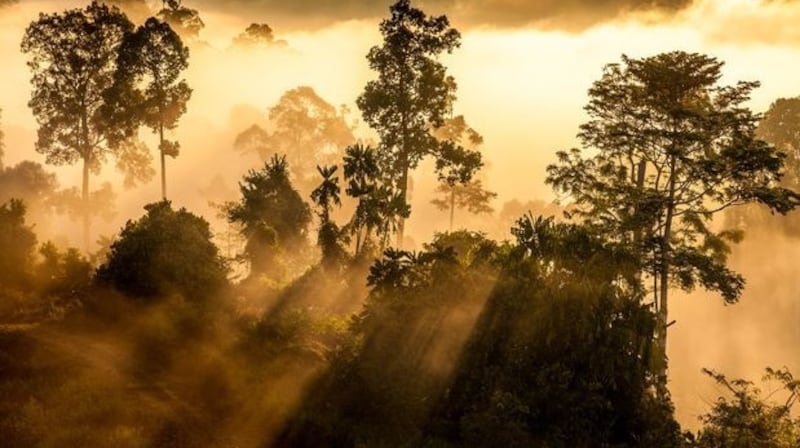
The most compelling reason to visit this biodiversity hot spot on the island of Borneo is to help preserve it. Every year, thousands of acres of pristine rainforest are burned down to make way for new palm oil plantations, but tourism could provide an incentive to protect these primeval jungles. Perched in the northeast corner of Borneo, and with multiple airports, the Malaysian state of Sabah offers diverse experiences while still being largely off the tourist map. Adrenaline junkies can climb Mount Kinabalu and go diving with sharks off the Semporna coast. Beach lovers should head to Gaya Island, a short ferry ride from the capital of Kota Kinabalu. The Gaya Island Resort has its own coral reef, marine center (and marine biologist) and stunning, sandy coves. But Sabah's biggest draw is the chance to see endangered orangutans in the wild. Cruise along the Kinabatangan River in small boats to glimpse the apes, as well as pygmy elephants, crocodiles and proboscis monkeys. Or head to the Sepilok Orangutan Rehabilitation Center, which has been rescuing orphaned orangutans from forest fires and poachers since 1964. The 60-odd resident orangutans come out of the reserve forest during daily feeding times. – Shalini Venugopal bhagat
29. Churchill, Manitoba, Canada
The Polar Bear Capital of the World confronts climate change
Via Rail's 1,610km (1,000 mile) route from Winnipeg north to Churchill was out of commission for 18 months after flooding in 2017. This starved the town, best known for polar bear viewing, of vital supplies and affordable transportation. Fewer visitors resulted in layoffs as businesses contracted to stay afloat. Now, with the train recently restored to service, Churchill is getting back on its feet. In addition to touring with pricey safari operators such as Churchill Wild, visitors can sign up for affordable citizen-scientist outings with Churchill Northern Studies Center. The conservation group Polar Bears International, which recently opened a new interpretive centre in town, says that since the 1980s, the polar bear population of western Hudson Bay, where Churchill is, has shrunk by 30 per cent, a result of global warming and the decline of sea ice that the bears depend on to access the seals they prey upon. As Churchill manages both the threat and the opportunity of climate change, it is carefully straddling industrial development – it has the only deepwater port in the Canadian Arctic – and scientific research; as the Churchill Marine Observatory, devoted to studying the effects of oil spills on sea ice, is set to open this fall. – Elaine Glusac
30. Uganda
A primate capital and birder's paradise becomes more accessible
Landlocked in east-central Africa, Uganda has long been in the shadow of Kenya, Tanzania and other countries more popular with visitors on safari. But Uganda, described by some as the Pearl of Africa, with its own rich wildlife, is set to become more accessible, thanks to the resurrection last summer of the country's national carrier, Uganda Airlines. Uganda is one of the world's primate capitals, with 15 species (four of which are endangered) and the Bwindi Impenetrable Forest National Park, a renowned mountain gorilla sanctuary. The Unesco World Heritage Site, in southwestern Uganda, is home to roughly half the world's mountain gorillas. The park's gorilla-trekking safaris limit contact to eight visitors per gorilla group per day, and proceeds from their trekking permits go toward conservation efforts and protecting the animals from poachers. The dense forest mountain park, which ranges in elevation from 1,161m (3,810 ft) to 2,707m (8,880 ft), also features a scenic waterfall trail framed by ancient ferns and wild orchids, and is a birder's paradise, with 350 species of forest birds. – Vivian Song
31. Paris, France
The food and fashion capital renews itself with a green push
Ever-resilient Paris had its setbacks in 2019. First came the Yellow Vest riots, then the catastrophic Notre Dame fire. But with a slew of big openings – restaurants by marquee-name chefs included – the City of Lights is renewing itself. The iconic Jules Verne restaurant, on the second floor of the Eiffel Tower, unveiled a gleaming new look and a new, high-profile chef, Frédéric Anton, last July. In June, the Bourse de Commerce will open as a museum showcasing the private contemporary art collection of French billionaire François Pinault, with a restaurant by the acclaimed father-and-son duo Michel and Sébastien Bras. In July, the imposing 18th-century Hôtel de la Marine will open its doors as a national monument, with a grand tearoom by Alain Ducasse. Fashion hounds, not to be outdone, have their own spate of news in April: Paris' fashion museum, the Palais Galliera, will reopen with double its former exhibition space; and after a 15-year-closure, the grand magasin La Samaritaine will reveal a stunning redesign and a luxury Cheval Blanc hotel. Paris will be greener, too, with what is expected to be the world's largest rooftop urban farm, NU Nature Urbaine, opening in April, and 100 hectares (247 acres) of new vegetation across Paris' rooftops, facades and walls through the city's ambitious Parisculteurs commitment. – Ratha Tep
32. Lake District, England
The 'loveliest spot' is now even more so
William Wordsworth's lyricism shaped romanticism, the movement of individualism, inspiration and communing with nature – which, for the celebrated poet, was epitomised by the Lake District, a verdant region of peaks and valleys in northwest England that was designated a World Heritage Site in 2017. In 2020, the 250th anniversary of Wordsworth's birth, an ambitious €7.1 million project, Reimagining Wordsworth, will highlight the writer across his pastoral Cumbrian homeland, notably in the achingly charming village of Grasmere. Wordsworth lived here, at Dove Cottage, where he scribbled vigorously to emerge with seminal works like I Wandered Lonely as a Cloud. At Dove Cottage and the corresponding Wordsworth Museum, the outdoors will be embraced with a new courtyard, walking trails, expanded galleries and a recreated orchard, while the village is unveiling a community sensory garden with local plants from Wordsworth's time. In Cockermouth, Wordsworth's birthplace, the Wordsworth House and Garden will also host an anniversary exhibit from mid-March 2020. But perhaps the most memorable way to pay tribute to the pioneering environmentalist is to roam the countryside – poetry readings will be held around Cumbria and beyond – guided by his prescient words: "Let nature be your teacher." – Annelise Sorensen
33. Tajikistan
A high-altitude haven for adventure travellers gets easier to visit
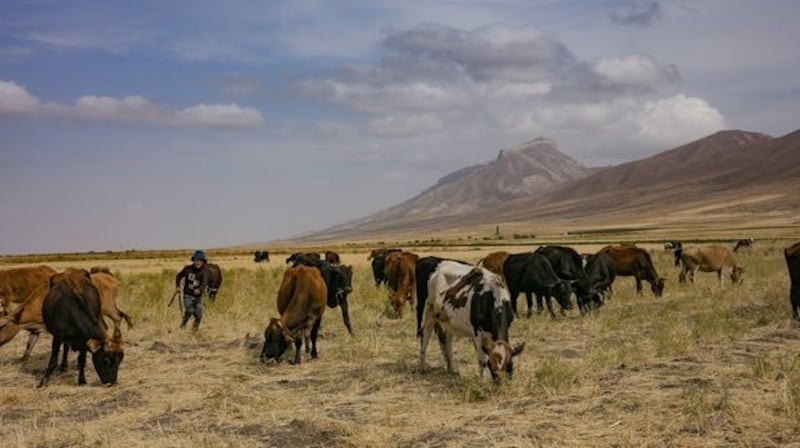
This landlocked country in central Asia is becoming a prime spot for hiking, white-water rafting and climbing, even though it's one of the least visited countries in the world. With little internet access and a developing infrastructure, it's pure off-the-grid travel – at least for now. The Wakhan Valley is a rugged region that sits mostly in northern Afghanistan but stretches into Tajikistan. Reached via the Pamir Highway, this area offers access to an ancient Silk Road fortress in Namadgut, where you can bathe in natural hot springs, climb the rocks above the city of Langar to discover ancient stone carvings, explore the fascinating mix of cultures or gaze at the Milky Way from the mountains of Murghab. (The tour company Remote Lands offers an itinerary – the Pamir Highway Road Trip – based on this dramatic route.) With 2020 comes greater accessibility: a further easing of visa restrictions, new flight connections with Somon Air and additional bus service on new highways connecting major towns. Hilton also recently debuted a flagship property in the capital, Dushanbe, the first of 10 new hotels opening across the country. – Daniel Scheffler
34. Antakya, Turkey
On the site of an ancient mosaic, there's a museum and a new hotel
Antakya, the former ancient city of Antioch that is nestled in southern Turkey near the Syrian border, has rich offerings for a visitor. An important centre for early Christians led by St Paul, it is home to one of Christianity's earliest churches, the Church of St Peter, cut into the mountain; one of the first mosques built outside Arabia; an old city of narrow alleys and white stone houses; and an exceptional archaeology museum filled with Roman and Byzantine mosaics. An unusual hotel, the Museum Hotel Antakya, overlooks extensive new archaeological excavations, including the largest intact Roman mosaic ever discovered, thought to be the floor of a forum. When digging the foundations for the five-star hotel, the Asfuroglu family encountered such important layers of ancient history that they financed the excavations and redesigned the hotel. The work uncovered tens of thousands of artifacts, city walls from 300BC and the fourth-century mosaic, an undulating flow that tells of devastating earthquakes and rerouted rivers. The site is now an open-air public museum, and the hotel, suspended on steel pillars, offers unparalleled views and glass walkways over the site, together with complimentary access to the museum. – Carlotta Gall
35. Leipzig, Germany
From industrial centre to shrinking city to newest cool-kid town

Thirty years after German reunification, the once-dreary factories of Leipzig have been overtaken by lofts, galleries, workshops, clubs and restaurants. Often called "the new Berlin," the city is home to more than 40,000 students (Angela Merkel was once one of them), and has a thriving night life scene, further boosted by the city's decision to abolish club closing times in 2018. However much it has changed, though, Leipzig hasn't forgotten its roots. Throughout 2020, in tandem with a state exhibition celebrating 500 years of industrialisation, Leipzig will celebrate its own industrial history, which dates back to the early 19th century, with exhibitions, performances, talks, fairs and tours of the city. Until March, the Museum of Fine Arts will explore, through 50 works of art, how the work of machines and humans have become intertwined over the past couple of centuries, and from March through June, the Museum of the Printing Arts will feature photos from as early as 1900 that document the effects of industry. Throughout the year, the city will offer tours of six areas where forced labour took place during the Nazi era. On the lighter side, a symposium in May with experts from Vienna, Berlin and London will highlight the history of how abandoned factories have been transformed into clubs and live music venues, and in the summer, seven bridges in the neighbourhood Leipzig West, once home to many factories, will become stages for open-air theatre. – Valeriya Safronova
36. Lima, Peru
A city of extraordinary food has a rich history and art as well
Lima today is arguably the culinary epicentre of South America, a city dotted with celebrity chefs and extravagant plates of extraordinary food. This exciting scene serves as an antidote to what in the past kept travellers from sticking around: gloomy skies, dilapidated corners, traffic jams and economic inequality. But those who give the place a chance are rewarded not only with world-class dining, but also with a rich historic and cultural capital filled with picture-perfect squares like Plaza Mayor, museums filled with ancient treasure like Museo Larco and artisan-dotted mansions like Dédalo Arte y Artesania. Tourists usually orbit around the Miraflores neighbourhood, with its cliffside boardwalk for bike riding and its tidy shops like Morphology, not to mention restaurants like Maido and Central, both in the Top 10 of the World's 50 Best Restaurants ranking. But there is shopping to be done at the local boutiques along Calle de los Conquistadores in San Isidro as well, just as there is a pre-Incan pyramid to explore in the centre of town. Don't get bogged down by the gray: Lima in 2020 is shining bright. – Shannon Sims
37. Molise, Italy
If you're in search of untrammelled, traditional Italy, you've found it
Never heard of Molise? Don't be embarrassed. Even many Italians haven't been to this region in south-central Italy. But those who make the pilgrimage have discovered one of the most spectacular parts of the country and its youngest region; it was part of Abruzzo-Molise until 1963. Among the draws: Roman settlements like Saepinum (a complex of baths and a forum that rival those in Italy's capital, but without the crowds); a pristine coastline that includes towns like Termoli, overlooking the Adriatic, with a Swabian castle; and mountains like Campitello Matese, home to a wide network of slopes for skiers. Hikers will also want to explore the routes of transumanza, the centuries-old tracks, along which sheep and oxen were herded, from Abruzzo through Molise into Puglia in the colder months. The festivals here are essential to the region's culture. In the Christmas season, during the Ndocciata festival, torches are lit in towns like Agnone; the Carrese festival in the spring features an oxcart race through Ururi. Ditch your car and view the landscapes by train. Called the Trans-Siberian of Italy because of its remote and spectacular route, it has carriages from the 1920s carrying passengers from Abruzzo's Sulmona to Molise's Isernia, past forests and mountain villages. – Ondine Cohane
38. Copenhagen, Denmark
A green city gets even more sustainable and connected
A slew of innovative developments are nudging Denmark's capital city closer to its carbon-neutral 2025 goal. The world's first waste-to-energy plant topped by a ski slope, CopenHill opened in time for the 2019-20 season. The ski hill, designed by Bjarke Ingels Group, sits in the city's emerging Refshaleoen neighbourhood. This year sees the opening of the five-star hotel Villa Copenhagen, housed in a former postal centre next to Copenhagen Central Station, the city's main train station. It's one of a few luxury hotels to meet the UN's Sustainable Development Goals. In November, riding the wave of new Nordic cuisine's success, chef Kamilla Seidler (Gustu) opened her new restaurant, Lola, which employs refugees, ex-convicts and disabled people, all with an eye toward social sustainability, creating an increasingly inclusive dining scene. And perhaps the biggest change is the giant new electric M3 subway loop (City Ring). Linking the neighbourhoods of Norrebro and Frederiksberg with 17 brand-new subway stations, it opened in late 2019. An additional subway line will open this year, making inner-city transport even more sustainable. – Adam Harney Graham
39. Richmond, Virginia, US
A once-quiet southern city now shines as a true cultural destination
Richmond, long known as a sleepy capital steeped in Confederate history, has morphed into a dynamic cultural centre on the cutting edge of the arts, food and recreation. Within easy driving distance from Washington, Charlottesville, Virginia, and Virginia Beach, the city is a magnet for Washington expats, millennials and college students. The entrance of the Virginia Museum of Fine Arts, on the newly christened Arthur Ashe Boulevard, features Kehinde Wiley's massive Rumors of War statue, which was designed to challenge the narrative of heroism in a city where US civil war monuments still loom. The Belleville, the city's first food hall, will open later this year in Scott's Addition, a longtime industrial neighbourhood turned urban hot spot. The food hall will be anchored by The Veil Brewing Co, a popular local craft brewery, along with 18 vendors and three bars. Newer dining standouts include the Spoonbread Bistro, which blends southern fare with French cuisine, and Parterre, a quaint restaurant offering comfort food at the historic Linden Row Inn. For outdoor enthusiasts, the mighty James River offers challenging Class III and IV white-water rafting, a rarity within a US city. – John L Dorman
40. Mount Kenya, Kenya
On a volcanic mountain, wildlife thrives and glaciers are disappearing
The second-tallest mountain in Africa (after Kilimanjaro), Mount Kenya – a massive, sleeping volcano that last erupted about 3 million years ago – lies just south of the equator and dominates the landscape of central Kenya. The mountain is also home to some of the world's last remaining tropical glaciers. But not for long: A recent assessment found that permanent ice on Mount Kenya could disappear completely before 2030. Now is the time to go. Getting to the mountain's rocky summit, which tops out at more than 5,182m (17,000 ft), requires technical climbing skills, but fit, motivated hikers can make the trek to Point Lenana, which, at 4,985m (16,355ft), is the ridgeline's third-highest peak. Over the course of the four- to six-day expedition, hikers travel through a panoply of ecosystems: from tussock grasslands to bamboo forests; from boggy heathlands to the high, wild landscape of the Afro-Alpine zone. Along the way, they might come across elephant tracks in the bamboo, hear hyenas whooping in the night and spot hornbills, sunbirds and hawk-eagles. Hikers either camp or stay in the moderately priced mountain shelters along the route. Guides are strongly recommended, and permits are required; they cost €47 a day for international visitors and can be purchased on arrival at the park. – Paige McClanahan
41. Minorca, Spain
A sustainable and art-driven future for a Unesco heritage island
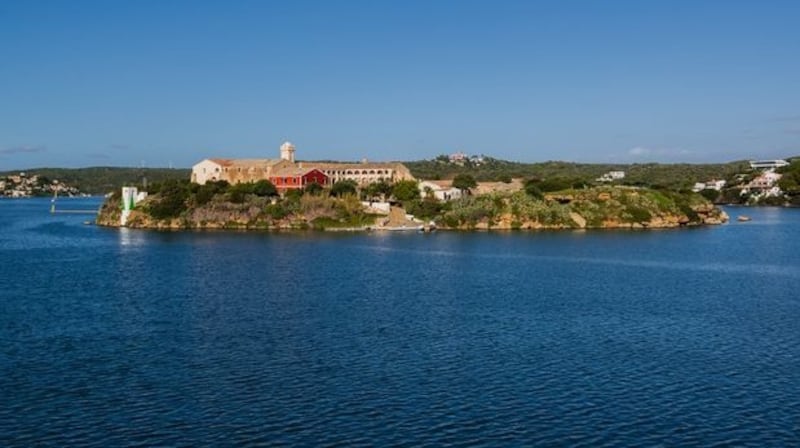
Beloved for its wild landscapes and unspoiled beaches, Minorca, the second-largest of Spain's Balearic Islands in the Mediterranean Sea (only Majorca is larger) and a Unesco Biosphere Reserve, is preparing to draw an artistic crowd in 2020. Hauser &Wirth, among the world's top contemporary galleries, will open an arts centre on Isla del Rey, an islet tucked into the port of Mahón, within a defunct 18th-century naval hospital and its outbuildings. The gallery promises to contribute to the hospital's full restoration and preserve the area's ecosystem through gardens designed by landscape artist Piet Oudolf. With rotating exhibitions, educational activities, a residency programme and a locavore restaurant, the gallery's arrival complements the island's strict focus on conservation and slow tourism. In lodgings, visitors have more choice as boutique hotels are sprouting that put sustainability at heart, too. Opened late last summer, Menorca Experimental is a 43-room farmhouse surrounded by wild gardens, while Torre Vella and Santa Ponsa are two secluded fincas (agricultural estates with ancient farmhouses) that have been restored. Spanning 300 hectares (740 acres) of working farmland that produce olive oil, aromatics and organic vegetables, both make for stylish bases to explore as locals do – slowly. – Lindsey Tramuta
42. Oberammergau, Germany
A once-a-decade Passion Play approaches its 400th year
The Bavarian village of Oberammergau has a population of 5,400, but it is expected to pull in half a million visitors in 2020 with its once-a-decade Passion Play, which runs from May 16th to October 4th. The first performance was held in 1634 and, for the first time in the play's nearly 400-year history, an equal number of men and women will participate this year in various roles. The five-hour narrative focuses on the last days of Jesus' life – from the Last Supper to the crucifixion – and taps into the talents of more than 2,000 residents born and raised in the village. Christian Stückl, who directs the play for the fourth time, hopes to tell the story in a novel way with refreshed tableaux vivants, or "living pictures," and an edited script that portrays Jesus as a figure "relevant to today's world, who is with those marginalised by society," he said. A partnership with the train operator Deutsche Bahn ensures late-night departures back to Munich, and there are specially discounted performances for younger visitors on May 8th and 9th. Oberammergau is also known for its woodcarving legacy, and whittlers, or "Herrgottschnitzer," take great pride in making wooden Christian motifs. – Charu Suri
43. Plymouth, England
Revitalised, this port city marks a historic occasion
This is the 400th anniversary year of the Mayflower's voyage from Plymouth to the New World, and this fascinating city in southwest England will mark the occasion with more than 100 events. Highlighting both the Pilgrims' and Native Americans' perspectives, they will include music, art, theatre, dance, comedy and historical reenactments. (Plymouth, Massachusetts, and other places will also take part.) Plymouth, which bills itself as Britain's Ocean City, has been enjoying a resurgence in recent years. High-profile chefs have opened restaurants and wine bars on the waterfront, like Pier One Bistro, the Honky Tonk Wine Library and Bonne Santé, and the once-quiet Barbican district is now full of cafes and bars. There are hundreds of old buildings, including the recently restored 16th-century Elizabethan House, once a "slum house" where as many as 58 people lived. (A new Mayflower Digital Trails app is available to guide visitors to the sites). And this spring brings the opening of The Box, a striking new cultural precinct featuring a regional archive, a history museum and contemporary art exhibitions. The city has a huge art deco swimming pool next to a stunning lighthouse and an intact 17th-century fortress; nearby is England's oldest gin distillery. – Dave Seminara
44. Atlantic Forest, Brazil
A vast ecosystem gets a new hiking trail to highlight its importance
Much of the world watched in helpless alarm last summer as unchecked deforestation sent huge swaths of Brazil's Amazon rainforest up in smoke. Protecting more of Brazil's – and the planet's – precious resources is the premise behind a major, multitiered conservation effort now underway in the country's Atlantic Forest. One of the richest ecosystems on the planet, the Atlantic Forest biome hugs Brazil's eastern coastline, and is home to Rio de Janeiro, São Paulo and more than 3,400 cities and towns. The effort, a proposed 4,000km (2,485 mile) hiker-friendly trail – half of which is complete – would formalise a continuous trail by connecting existing hiking paths through five states and raise public awareness of the Atlantic Forest's importance and vulnerability. The conservation group World Wildlife Fund Brazil, which is leading the project along with private and public sector partners, believes attracting visitors will create more interest in protecting a public heritage and shoring up conservation efforts that have been weakened by Brazilian president Jair Bolsonaro. And these days it's easier for citizens of the United States, Canada, Australia and Japan to travel: Last summer, Brazil waived visa rules for those visitors for up to 90 days. – Vivian Song
45. Belle-Île, France
A pristine artistic haven inspires a new wave of visitors
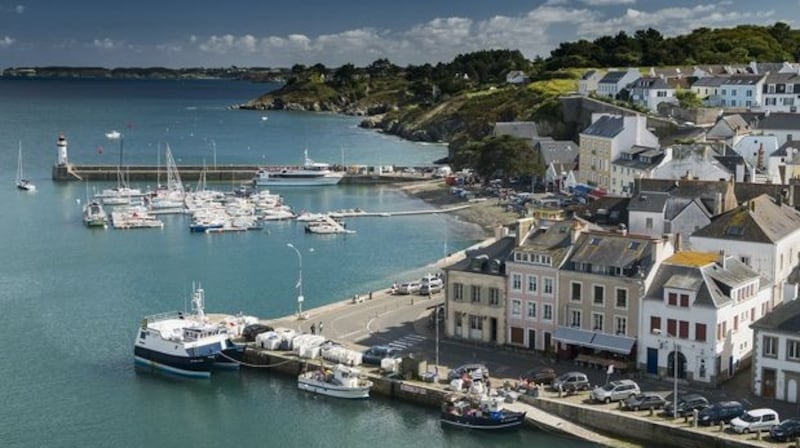
The aptly named Belle-Île-en-Mer (beautiful island in the sea), the largest island off the coast of Brittany, is on the cusp of a new wave of popularity. One of the greenest and most pristine destinations in France, it has recently had several excellent locavore restaurant openings, like Japanese-born chef Haruka Casters' Restaurant AO, and stylishly renovated hotels, including the 1880-vintage Hotel du Phare, whose refurbishment was led by architect Jean-Michel Wilmotte. A favoured late 19th-century hideaway for artists like Claude Monet, who made its dramatic beaches the subject of many paintings, and the actress Sarah Bernhardt, who created a summer house from a disused stone fort at the Pointe des Poulains, Belle-Île is 45 minutes from Quiberon by ferry. An electric-rental-car service, inaugurated in 2019, is the latest in a variety of eco-responsible initiatives intended to preserve its natural beauty. (Others include a specialised team that maintains the island's 90km (56 miles) of hiking trails and rebuilds the dunes along its magnificent and strictly protected coastline.) – Alexander Lobrano
46. Val d’Aran, Spain
A once-remote Pyrenean valley gets adventurous

Strapping on snowshoes used to be one of the few ways into this plunging Pyrenean valley during the winter. Access is now easier – it's a pine-fringed 321km (200 mile) drive from Barcelona, thanks to improved roadways and a tunnel – but the Val d'Aran is still a culture apart. The centuries-long isolation preserved its medieval villages, Aranese language and pristine wilderness, which serves as the magnificent backdrop for an emerging outdoor adventure scene that remains largely eclipsed by the dazzle of Barcelona and the coast. The soaring Baqueira-Beret ski resort now has more than 160km (100 miles) of runs, with a recent expansion to its highest peak, Cap de Baciver, as well as off-piste terrain around Escornacrabes (meaning where goats fall). Refuel at lively wine bars and restaurants (this is Spain, after all) like Cinco Jotas Baqueira, where you can feast on ham made from acorn-fed pigs. The valley is also newly claiming summer, with hiking and biking trails that fan out across the Pyrenees, including an upgraded section of the Camino de Santiago and a new cycle path along the Garonne River. In July, the Ultra-Trail du Mont Blanc (UTMB), among the world's most challenging foot races, is bringing its international competition to the Val d'Aran for the first time, along with festivities like the music-filled Baqueira-Beret Trail Festival. – Annelise Sorensen
47. Mongolia
Catch a glimpse of Mongolia before the rest of the tourists get there
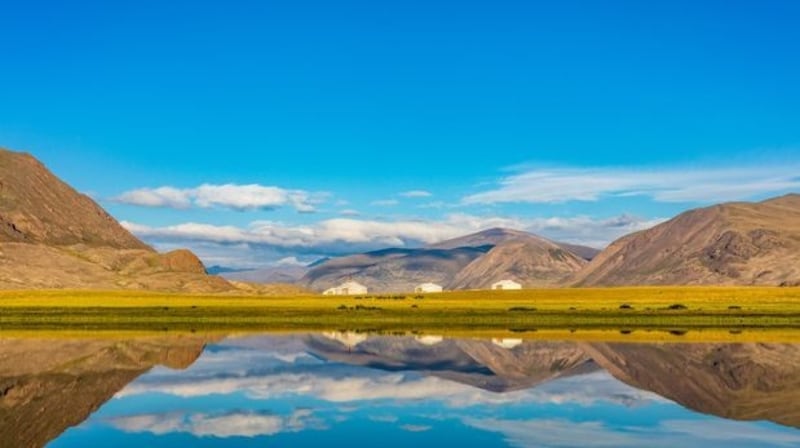
If you're looking for the one spot on earth to discover before mass tourism does, visit Mongolia in 2020. It might be hard to imagine this sparsely populated country becoming spoiled – but its tourist numbers are on the rise, and so is its infrastructure. Last year Mongolia attracted 530,000 tourists, up from 150,000 in 2000. Ulaanbaatar, the capital, is opening a new airport, scheduled for completion by the end of May. Financed by the Japanese government, it will accommodate triple the passengers of the current one. More direct routes from Asian destinations are expected, too. Today, Mongolia has more than 400 travel companies, 300 hotels and 600 resorts and tourist camps. The government is giving tax breaks to companies building hotels and has abolished licenses for tourism businesses. It even has a tourism slogan: "Mongolia – Nomadic by Nature." Some popular activities include trekking, climbing, birding, horseback riding, camel trekking and yak caravans. Nearly every travel company includes the Gobi Desert on its itinerary. One great cultural event is the Naadam sports festival held in July. It includes Mongolia's three most popular sports: Mongolian wrestling, archery and long-distance horse racing. – John Henderson
48. Juliana Trail, Slovenia
A sustainably focused hiking loop showcases a green country's epic beauty
Slovenia is arguably the world's most environmentally conscious nation. In 2016, its chief city, Ljubljana, was named European Green Capital. In 2017, Slovenia became the first country certified as a "green destination." So it comes as no surprise that this mountainous swath of land – the size of Massachusetts with a population of two million – recently put the final touches on the new sustainability-focused Juliana Trail, in time to receive trekkers for spring 2020. The 267km (166 mile) hiking loop, which circumnavigates Triglav National Park [and its 2,864m (9,395ft) Mount Triglav] and connects villages throughout southeastern Europe's Julian Alps, has a twofold raison d'être. One is obvious: to provide adventurers with a route traversing the country's scenic highlights – like the photo-op-friendly Lake Bled, the emerald-green Soca River and the glacial Lake Bohinj. But the path will also spread out visitor traffic, reduce tourist bottlenecks and bring more travellers to overlooked spots along the way. Responsibility, after all, is at the heart of Slovenia's master plan for tourism. "It's not enough to love a landscape today," says Janko Humar, director of the Soca Valley Tourist Board. "You have to proactively manage to preserve the future." – Alex Crevar
49. Addis Ababa, Ethiopia
A hot economy is bringing eco-tourism to the capital
Ethiopia, where coffee is said to have originated, where Stone Age ancestors first carved flint into tools and where churches were hewn into rock and perched atop cliffs, is Africa's fastest-expanding economy. Nowhere is its rise more evident than in bustling Addis Ababa. Ethiopia's capital has been named a 2020 World Capital of Culture and Tourism and for good reason. Its treasures include Aksum, which, according to tradition, is the birthplace of the Queen of Sheba; a national museum housing traditional crafts and prehistoric fossils, and cathedrals including the copper-topped, neo-Baroque Holy Trinity and massive, mural-filled Medhane Alem, the second largest in Africa. The city has the first light-rail system in sub-Saharan Africa and an industrial and transportation sector humming with new eco-conscious energy. Public spaces have turned greener, and there are more eco-friendly lodges for tourists. Now Bole International Airport, once a tiny, chaotic transit hub, has had a €326 million renovation. Three times the size of its predecessor, the airport has a nearby five-star hotel and the capacity for 22 million passengers a year. – Debra Kamin
50. Transylvanian Alps, Romania
A celebration of old-growth forests in Europe
To experience a piece of real wilderness without having to go to the ends of the earth, look no farther than Romania. Of all the old-growth primary forest that remains in Europe, 65 per cent of it is there. These forests, home to bears, wolves and an incredible array of flora and fauna besides, are found all around the country, but you could do worse than head to the Southern Carpathian Mountains, also known as the Transylvanian Alps, for the full experience. A visit to the Domogled-Valea Cernei National Park, or the Fagaras mountain ranges farther east, offers thousands of acres of truly untouched nature alongside opportunities for hiking, camping, swimming under waterfalls and more. Romania's very decent roads (one of which, the Transfagarasan, is a destination in itself for motoring enthusiasts) make it possible to reach all of this, even on shorter trips. There's never been a more important moment to see and celebrate these forests. Despite the efforts of conservationists including Britain's Prince Charles, who called them "a priceless natural treasure in a continent that has long since destroyed most of its wildernesses," logging continues, some of it illegal. Travellers coming in greater numbers could have a real impact, sending the message that these trees are worth more alive than dead. – Gabriel Leigh
51. Urbino, Italy
Paying tribute to the life and work of a great Renaissance artist
This year is the 500th anniversary of Raphael's death. One of Italy's greatest Renaissance painters, Raphael lived in Urbino – in a perfectly preserved house just down the street from romantic Piazza di San Francesco. On the first floor is one of his first frescoes. In the 15th century, the house was a gathering place for some of the best artists and writers from around Italy. A show displaying some of Raphael's greatest works in context with some other Renaissance artists began in October at Urbino's Galleria Nazionale delle Marche and continues through January 19th. From April through the end of 2020, the city will hold trade shows, conferences and spaces dedicated to literature and dance. Today, Urbino's artistic vibe is alive and well. In addition to boasting one of the world's oldest universities (the University of Urbino was founded in 1506), Urbino is also considered Italy's book capital because of its Institute for Book Decoration and Illustration. There's a jazz festival in August. A walled city on a hill with numerous views of the underrated countryside of Le Marche, Urbino has everything Tuscany has – but at half the price and with half the tourists. – John Henderson
52. Glacier National Park and Whitefish, Montana, US
A changing landscape in a warming world
When Glacier National Park was created in 1910, there were 150 glaciers; today, only 25 still exist. As harsh winters and scorching summers continue to change the landscape of the park, it still offers jaw-dropping natural beauty, with 762 lakes, 175 mountains, 200-plus waterfalls and more than 1,126km (700 miles) of trails. And this summer will see the reopening of the Sperry Chalet, a beloved century-old wilderness lodge that's been rebuilt after a destructive wildfire in 2017. To enjoy the nearly $9 million (€8 million) reconstruction of the 17-room dormitory, be prepared to make a reservation months in advance and then plan for a rugged hike up the side of a mountain to get there. While the chalet and other historic lodges are great base camps, those wanting to stay closer to civilization should head to Whitefish, an old railroad stop turned resort town, about 30 minutes west. Award-winning restaurants like Cafe Kandahar and boutique lodgings such as the Firebrand Hotel have opened in recent years, but this lakeside town still maintains its frontier spirit. – Justin Franz
– New York Times










